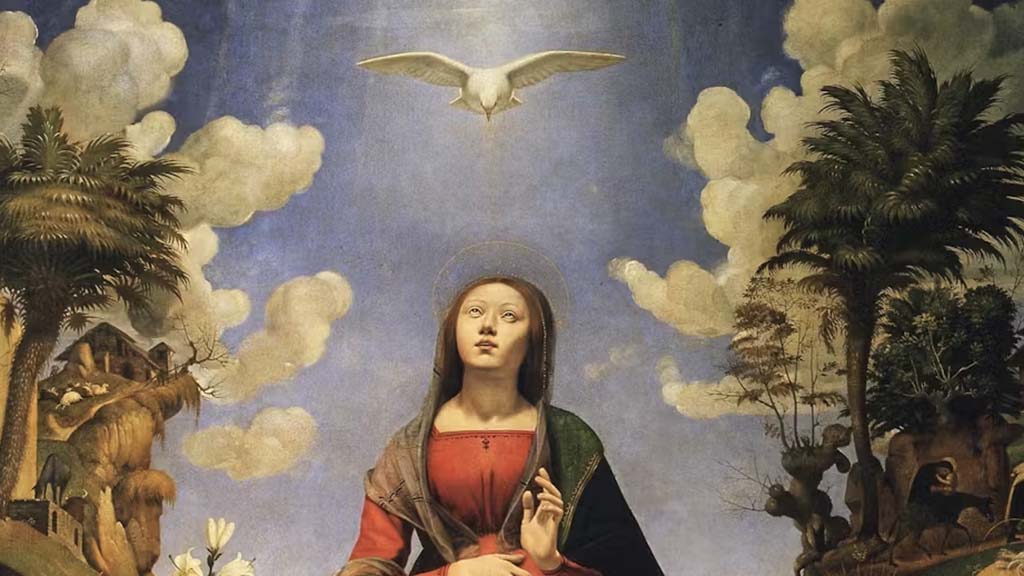Dr. Craig D. Atwood
Professor Emeritus, Moravian Theological Seminary
One of the least known and most intriguing parts of Zinzendorf’s theology is his use of the word “Mother” to describe the Holy Spirit. This was not just a passing fancy for Zinzendorf. In fact, for over twenty years, this was the primary way he referred to the Holy Spirit and towards the end of his life, his attachment to this type of devotion increased. In the 1750s, the Moravians sang several litanies about the Mother, and even had a special annual festival celebrating the “enthronement” of the Spirit as the Mother of the church.
Click HERE to read the 1759 Church’s Prayer to the Holy Spirit
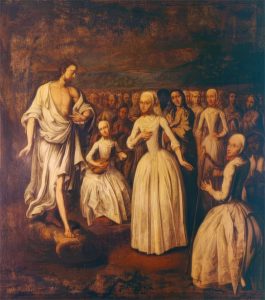
Zinzendorf’s approach to the motherhood of the Holy Spirit may relevance for contemporary discussion on the language we use when we speak of God. For Zinzendorf, the main issue was not whether a metaphor was sexist, it was whether the metaphor clearly, concretely, and persuasively communicated the nature of God. For him, it was better for the believer to call the Spirit “Mother” than anything else because that word communicates something essential about the way in which the Holy Spirit deals with the children of God. In his own life, he found that he had difficult experiencing the reality of the Holy Spirit until he came upon this metaphor.
I could not speak about it [the Holy Spirit], since I did not know how I should define it. I simply believed that she is the third person of the Godhead, but I could not say how this was properly so. Instead I thought of her abstractly. … The Holy Spirit had known me well, but I did not know her before the year 1738. That is why I carefully avoided entering in the matter until the Mother Office of the Holy Spirit had been so clearly opened up for me.
According to Zinzendorf, the name which best communicates the reality of the Spirit’s relationship to Christians is simply “Mother” because those who know the Spirit know her as the Mother. Those who experience the Trinity in their hearts know that “a family must be complete. We must have a Father, Mother, and Husband.”
God [Christ] is even our dear husband, his Father is our dear Father, and the Holy Spirit is our dear Mother, with that we are finished, with that the family-idea, the oldest, the simplest, the most respectable, the most endearing idea among all human ideas, the true biblical idea, is established with us in the application of the holy Trinity, for no one is nearer to one than Father, Mother, and Husband.
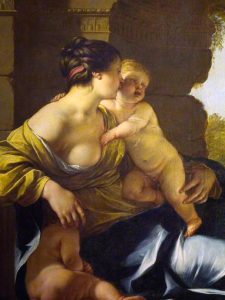
This is language that even a child can comprehend. It is the best language to communicate spiritual reality for all people because it does not depend on abstract reasoning or speculation on unfathomable realities.
Zinzendorf argued for the scriptural authority of the Mother Office by linking together the Old and New Testament verses Isaiah 66:13 and John 14:26:
When the dear Savior at the end of his life wanted to comfort his disciples (at that time the language was not as rich as ours is); by that time the Savior, who was a very great bible student, had doubtlessly read the verse in the Bible “I will comfort you as a mother comforts one.” Then the dear Savior thought, “If I should say to my disciples that I am going away, then I must give them some comfort. I must say to them that they will receive someone who will comfort them over my departure. It will not be strange to them, for they have already read it in the Bible. …There it reads, they shall have a Mother: “I will leave you my Spirit.”
Zinzendorf acknowledges that theologians have generally rejected this linking of verses and the subsequent naming of the Holy Spirit “Mother,” but he responds:
Now no theologian is irritated if the word comfort is taken out of the passage and applied to the Holy Spirit, for they call her the Comforter. But if we take out the word Mother and signify it to the Holy Spirit, then people are opposed to it. I can find no cause for such bickering and arbitrariness, and therefore I pay no attention to it. For if the activity in a passage is proper to the Holy Spirit, then the title also goes to the Holy Spirit.
Zinzendorf insists that the word “Mother” does not introduce a distinction of genders into the deity, such as Ann Lee or Mary Baker Eddy proposed, but deals only with the activity of God in the world. The Mother is not a goddess. Rather, the Holy Spirit acts in the role of mother to the church.
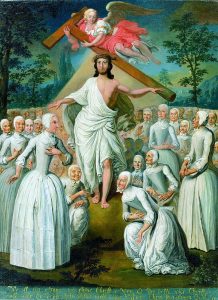
Zinzendorf explicated his doctrine of the Holy Spirit, proclaiming that she is a mother in three distinct ways. First, it was the Spirit, not Mary, who was the true mother of Jesus, since she “prepared him in the womb, hovered over him, and finally brought him into the light. She [the Spirit] gave him [Jesus] certainly into the arms of his mother, but with invisible hands carried him more than his mother did.” Second, the Spirit is the mother of all living things because she has a special role in the on-going creation of the world. “It is known that the Holy Spirit brings everything to life, and when the man was made from a clump of earth … the Holy Spirit was very close through the breathing of the breath of God into the man.” Thus, the Holy Spirit is the mother of all living souls in a general way.
The Holy Spirit is also the Mother in a third and most important sense. She is the Mother of the church and all those who have been reborn. “The Holy Spirit is the only Mother of those souls who have been once born out of the side hole of Jesus, as the true womb of all blessed souls.” Zinzendorf bases this understanding of the Spirit giving birth to converted souls in large part on Jesus’ conversation with Nicodemus in John 3. Jesus told Nicodemus that he must be born again, not from his mother’s womb, but from God. Nicodemus knew that we are born from a mother, not a father, but he did not know who this mother was. Zinzendorf has Jesus reply, “There is another Mother, not the one who physically gave you birth, that one doesn’t matter: you must have another Mother who will give you birth.” Ultimately, then, the Holy Spirit is the Mother of the Christian in the sense that she is the active agent in conversion. Human actors are only agents of the Holy Spirit, and in some cases are not even necessary for conversion.
Click HERE to see a plaque to the Holy Spirit as Mother in Bethlehem, Pennsylvania
The first duty of the Spirit is to preach Christ, but her motherly work does not end there. The Mother also cares for her spiritual children just as a human mother cares for her physical children. She protects, guides, admonishes, and comforts the child of God throughout the changing years of earthly life. “The Mother does not rest until a child has lasting grace, until it finally sinks into the hands of the one Husband, the Friend of all souls, the Creator of all things, who is now the Bridegroom.” The care of the Holy Spirit mainly takes the form of preserving Christians from sin. Believers enter the school of the Holy Spirit where they are taught what they should and should not do. Just as a human mother teaches her child proper behavior by saying, “My child, you must do it this way, [and] you must not do that,” so too does the Holy Spirit.
The Mother who is above all mothers [says], “I will comfort you; I will remind you; I will motivate you; I will define you; I will wean you from all rudeness and uncivil things. I will make a well-bred child out of you, better than any mother does in all the world.”
The language of motherhood expresses the intimate connection the Brüdergemeine felt with God through the Spirit. Each member of the Brüdergemeine is a child who “sits on the Mother’s lap, is received into the school, and is led through all classes; then it is under the special dispensation, under the motherly regimen of the Holy Spirit, who comforts, punishes, and kisses the heart, as a mother comforts, punishes, and kisses her own child.”
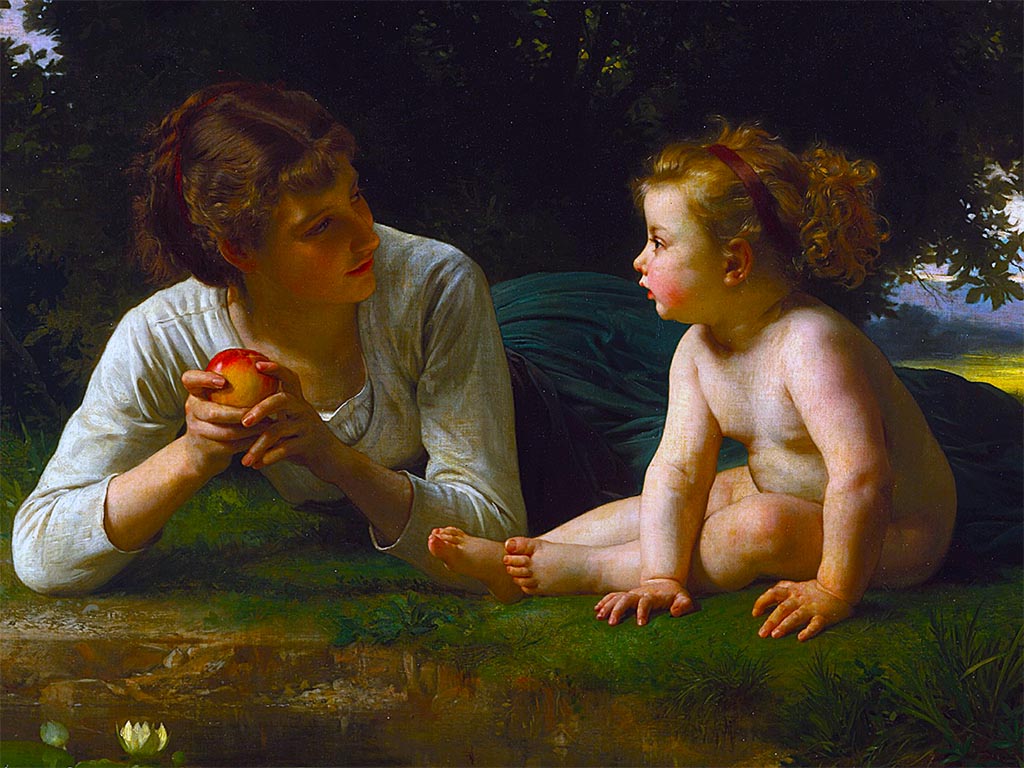
The heavenly Mother works individually since she knows the thoughts and weaknesses of her children and guides them in the path that is best for them. She directs their development in understanding and ability until their maturity and completion in death because “she has created the world with the Savior and now is [re-]making every child until it is a new creation, until it become one in the spirit with him, and she nurses and watches until it is grown.”
For Zinzendorf, the Christian community is modeled on the Holy Trinity, which is the original Gemeine and the original Kirche. This model was tarnished by Adam and Eve but has been restored by Jesus Christ and is marked by intimacy with one another and with God. All Christians are in the family of God. “Therefore nothing is better [than] to live in the family of our Husband, his Father, and our dear Mother.” Children who grow up in this Gemeine of God should no more be able to doubt the reality of their membership than children who grow up in an earthly household can doubt that they were born into the family.
- Featured image is a detail from Incarncarnazione by Piero di Cosimo (1505) – The Uffizi Gallery, Florence, Italy.
Published on November 19th, 2011

